
 Podcasts
PodcastsCatch the latest PR news & updates with PRovoke Media's PR Podcasts. Lifting the lid on key industry stories & trends, join our listeners of PR podcasts today.
 Videos
VideosLatest video interviews and campaigns from PRovoke Media, previously known as the Holmes Report.
Long-form journalism that analyzes the issues, challenges and opportunities facing the business and practice of PR.
 Profiles & Interviews
Profiles & InterviewsExplore PR profiles and interviews with leaders from the marketing and PR worlds.
 Crisis Review
Crisis ReviewPR Crisis & Business Crisis review. PRovoke Media's annual analysis of the top reputation crises to rock the corporate sector. Read on here.
 Coronavirus
CoronavirusPRovoke Media's coverage of the Covid-19 crisis, focusing on corporate communication, public affairs & PR industry fallout.
 Trend Forecasts
Trend ForecastsPRovoke Media's PR Trends round up. PRovoke Media's annual forecast of PR trends and news that will impact the PR world in the year ahead...
 Social & Digital
Social & DigitalDedicated to exploring the new frontiers of PR as it dives deeper into social media, content and analytics.
 Technology
TechnologyOur coverage of key technology PR trends and challenges from around the world of digital communications.
 Consumer
ConsumerFrom brand marketing to conscious consumerism, coverage of key marketing and PR trends worldwide.
 Employee Engagement
Employee EngagementPRovoke Media's coverage, analysis and news around the rapidly-shifting area of employee engagement and internal communications.
 Sports Marketing
Sports Marketing Sports PR news, diversity & inclusion trends, views and analysis from PRovoke Media. Subscribe today for the very latest in the world of sports communications.
 Global PR Agency Rankings
Global PR Agency RankingsPRovoke Media's definitive global benchmark of global PR agency size and growth.
Enter PRovoke Media's 2024 Global 250 Agency Ranking and/or our Agencies of the Year competitions now.
 Agencies of the Year
Agencies of the YearPRovoke Media's annual selections for PR Agencies of the Year, across all of the world's major markets.
 Innovator 25
Innovator 25PRovoke Media profiles marcomms innovators from across North America, EMEA and Asia-Pac.
 Creativity in PR
Creativity in PRIn-depth annual research into the PR industry's efforts to raise creative standards.
 Asia-Pacific Communication Index
Asia-Pacific Communication IndexAPACD/Ruder Finn annual study of Asia-Pacific in-house communications professionals.
 SABRE Awards
SABRE AwardsThe world's biggest PR awards programme, dedicated to benchmarking the best PR work from across the globe.
 PRovokeSummit Global
PRovokeSummit GlobalThe biggest PR conference of the year, a high-level forum designed to address the critical issues that matter most.
 PRovoke Media Regional Series
PRovoke Media Regional SeriesA global network of conferences that explore the innovation and disruption that is redefining public relations.
 Agencies of the Year
Agencies of the YearUnrivalled insight into the world's best PR agencies, across specialist and geographic categories.
 Roundtables
RoundtablesOur Roundtables bring together in-house comms leaders with PR firms to examine the future of communications.
 Agency Playbook
Agency PlaybookThe PR industry’s most comprehensive listing of firms from every region and specialty
.jpg) All Jobs
All JobsFind the latest global PR and communications jobs from PRovoke Media. From internships to account executives or directors. See all our PR jobs here.
PRovoke Media's editorial series published in collaboration with partners.
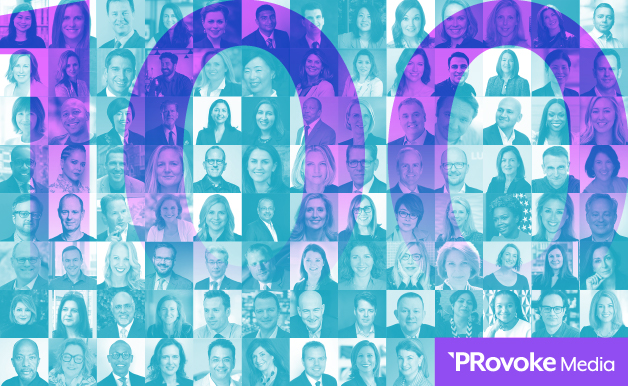
When we asked our respondents about their predictions for the future of the chief communications officer and chief marketing officer roles, the responses were more varied than in previous years, with a far greater sense that the two functions would evolve in the face of ongoing significant and even transformational challenges for businesses, linked to much bigger issues outside their own firms.
In particular, there was again a clear view – which emerged for the first time last year – that the responsibilities of the CCO role would evolve as a direct result of an increasing focus on ESG, purpose and social impact – and the link with reputation – while the CMO role would likely have a more performance-driven bent:
“More revenue responsibility for CMOs, more sustainability/climate responsibility for CCOs.”
“I once thought CCO and CMO roles will likely merge with lines already blurring in some companies. But now I think it will stay distinct, with CCOs focussed on dealing with increasingly complex issues and stakeholder interests, while CMOs grapple with the dizzying speed at which tech-driven marketing is evolving and the challenges and opportunities therein.”
“ESG themes will continue to rise in importance. The turbulent external environment will put good judgement and adaptability at a premium.”
“CCO roles will become more overtly corporate functions and strongly tied to the CEO and extended management teams. CMO roles will become heavily performance marketing aligned."
“CCO is becoming more of a counselor; CMOs are becoming less relevant. Chief commercial officers tied to business results are more relevant.”
“I think CCOs are going to play even bigger roles in strategic decisions for how companies live up to the expectations of key stakeholders.”
“The real challenge, in a communication now strongly focused on ESG and D&I issues, will be to make people perceive the real difference and distinctiveness in the approach of one's own company compared to all others.”
Some of our Influencers noted that crisis management was now essentially a key function within businesses rather than an occasional tool, with more than one noting that it “will become even more important” as businesses “learn to deal with ambiguity and unexpected global catastrophes”.
Others noted that the shift from the globalisation paradigm to a new phase of increasing polarisation would likely present a challenge for both functions: “CCOs would be expected to be more involved as the custodians of ethics, corporate behaviour and reputation management. They would be required to base decisions on data, public sentiments and navigate the organizations reputation when caught between crossfires of polarised communities.” Another said: “Campaign integration across all touch-points (and there are so many) becomes even more important as does the right balance between global and local relevance in a (geo-politically) divided world.”
Many do still feel that there will be more integration and coordination between the two roles, however, or even a blurring of them, to meet businesses’ future challenges:
“Consumer and corporate narratives are increasingly integrated across purpose and performance. CCO and CMO roles have to be able to work effectively hand in hand to leverage each discipline's strengths.”
“I think the roles will come closer together in the future with many being combined. I think this is for the better for companies.”
“Marketing and comms lines are blurring as we know. Communications needs to be as visual, snackable and creative as marketing at times. The days when a communications leader is just a media person are over. The skill set needs to be broader because more innovation is needed to break through the noise.”
“I think the roles are beginning to blend. In my role, I am both the chief communications officer and the chief brand officer. This ensures total integration regardless of channel.”
“Both roles will become closer – so those that will be leaders in the future need to become more adapt at integrated marketing to match the end user experience.”
“While the tech industry has already seen a consolidation of these two roles, we will more and more of CMO and CCO roles merging in most industries in the time to come.”
“The integration (functional and competency) will continue; communications leaders are best/well positioned to lead in an integrated function, if we can demonstrate understand and mastery of the brand reputation mechanisms that drive actual sales growth market expansion via reputation and align our teams and resources accordingly.”
As one of our influencers noted: “It’s a partnership. Not a turf battle.”
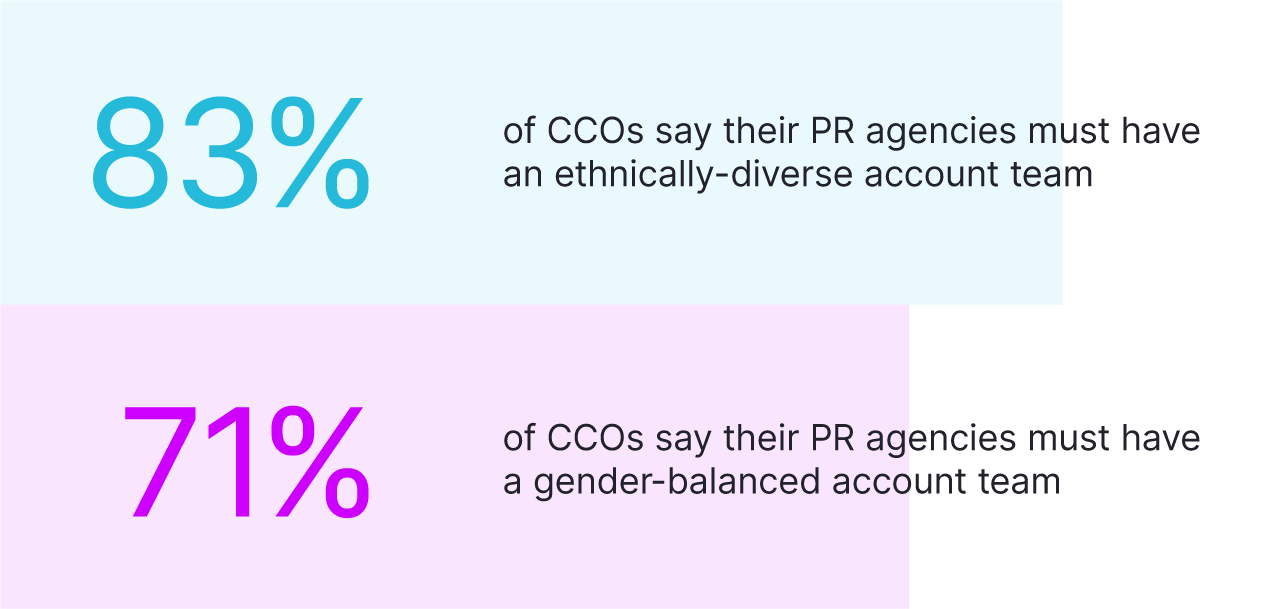
Diversity, equity and inclusion continues to be a spotlight theme for the industry this year, and there’s been a slight shift shift in what CCOs require of their PR agencies, and how committed they think the industry is to diversity. In 2020, the number of our respondents who agreed or strongly agree that their PR agencies must have an ethnically diverse team was up from 67% in 2019 to 86%; last year, it was down to 78%, and this year it was back up to 83%.
Around the same number as last year were neutral on this question: 15% compared to 16% in 2021 – still up notably on 7% in 2020. The number of in-house leaders who disagree or strongly disagree that their agencies must have ethically-diverse teams, however, has dropped from 6% last year to under 3% this year.
There is a more stable level of conviction when it comes to whether our respondents think the communications industry is committed to recruiting, retaining and promoting people of color: 54% agreed or strongly agreed, compared with 52% last year – and just 37% in 2017. A further 29% were neutral, down from 32% last year. However, 17% of our Influence 100 still think the industry is not committed to resolving issues of racial inequity – up from 14% last year – although, for the second year running, no-one strongly disagreed.
There is an equally broad spread of opinion about whether the industry is committed to recruiting, retaining and promoting people from diverse socio-economic backgrounds: 43% agree or strongly agree, compared to 37% last year and 33% in 2020 year, while 29%% are neutral on this point, but 24% disagree or strongly disagree, compared to 18% last year.
When it comes to gender, there’s again been a worrying drop off in the number of CCOs who agree or strongly agree their PR agencies must have a gender-balanced account team, down from 82% in 2020 to 73% last year, and now 71%. The number who said gender balance was not a requirement of their agency teams was up a little, from 2% to 5%, but still down on 11% in 2020; 24% remained neutral on this question.
The number of our influencers who agree that the industry is committed to recruiting, retaining and promoting women was fractionally up on last year, at 85%. A further 10% took a neutral position (down from 16% last year) with only 5% saying they disagreed with this statement and no-one saying they strongly disagreed.
There’s a more confident and consistent response to the questions of whether the industry is committed to recruiting, retaining and promoting those in the LGBTQ community: 71% agreed or strongly agreed it was, consistent with last year, when it was up sharply from 57% in 2020 and 49% in 2019. A further 22% were neutral and 7% disagreed with this statement, compared to 4% last year and 12% in 2020.
We also again asked our Influence 100 to delve deeper this year, and come up with practical suggestions for what the PR and communications industry could actually do to improve diversity, equity and inclusion.
One area of focus was recruitment practices in general, and bringing younger people from more diverse backgrounds into the industry. For many, a key element to resolving the industry’s diversity problem is at the grassroots, on internships and entry-level roles, working more closely with schools, colleges and universities, educating young people about PR and communications, and building stronger pipelines: “Target high school and college students”; “Stronger pipeline programs from high school and university”; “Start earlier by building bridges with a diverse community of applications well before it comes time to recruit.”
The area with multiple responses this year, however, was the need to support diverse talent and promote equity far better within organisations, with systemic change and major shifts in leadership, rather than just policies and commitments:
“The industry needs to create more opportunities in organizations. Efforts today leave a lot to be desired.”
“More women as heads of agencies.”
“Tie management compensation to diversity metrics.”
“Pay gap or other quantitative surveys could be a way to help draw attention and awareness for real and targeted action.”
“Educate hiring managers and foster a culture where every voice is welcome, heard and respected.”
“Get leadership endorsement and make it part of the leadership charter.”
“More deliberate actions in recruitment, reward and promotion.”
“Walk the talk – it’s still primarily run by white men!”
“Co-create industrywide goals and then align on these at the highest corporate and agency levels.”
“Help create meaningful models for diverse ownership.”
Several respondents felt that the best way of improving diversity was to make the business case for it, and some went further, suggesting that transparent diversity statistics should be a required part of annual business reporting: “Nothing creates change better than shining a bright torch on an issue.” Other respondents said recruiting outside cities was crucial: “Base agencies outside of major areas. Become more immersed in where most people live.”
A number of respondents believe the communications industry could use its skills better to further the wider cause of diversity, with one saying” “Do a better job of sharing the story – with data and creativity – about how diversity, equity and inclusion benefits teams, companies and communities” and another saying the industry should “use its own PR and advocacy skills to advocate for societal change.”
Another said: “External communication, specifically, plays a fundamental role in creating a generalized awareness of diversity, equity and inclusion issues, starting, for example, with dissemination to the different target audiences. Training activities can range from the different meanings of diversity to the development and promotion of an inclusive language. In more mature companies, where the value of diversity is more firmly established, or where at least an internal awareness-raising process has already been initiated, PR can help embed the good things developed within the company, not only to work on brand reputation, but also promote an inclusive approach throughout the corporate world.”
Finally, this respondent summed up the complexity of the issue: “There is no "one thing" we have to do many things, well, over time.”
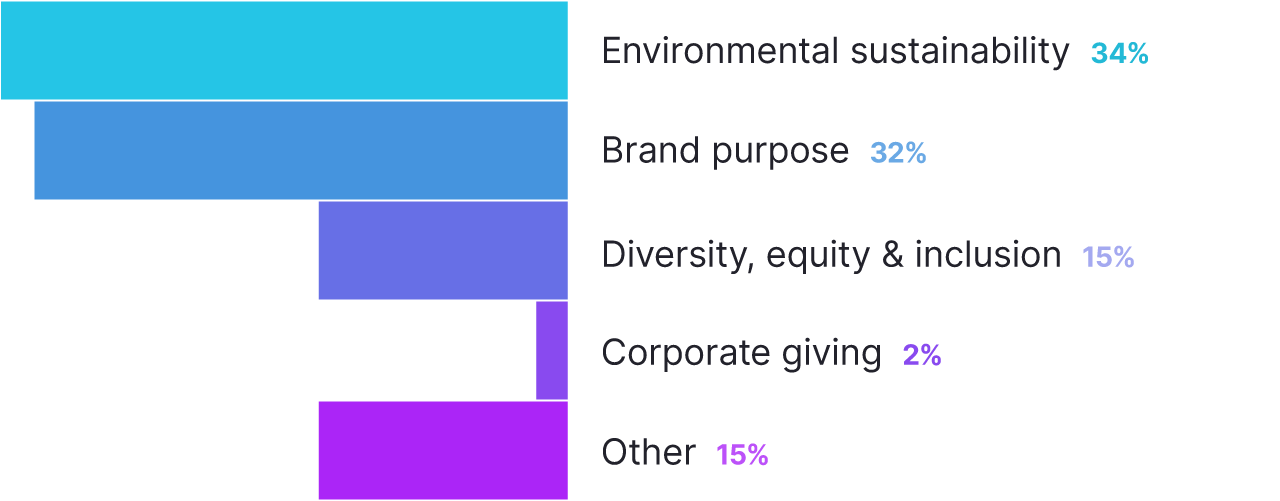
In the two years we’ve been asking respondents this question, environmental sustainability has only grown in importance for communicators as businesses strive to become better corporate citizens. ESG was cited by 29% of respondents in 2021, this year, the figure has gone up to 34%. Brand purpose has also become a priority for more of our influencers, 32% this year compared with 25% last year. Interestingly there was a small decrease in the percentage of respondents anticipating diversity, equality and inclusion being important for the year ahead. Corporate giving remained stable at 2% and 15% had other priorities.
As a companion question to which areas of social good our influencers felt would be important for the comms function in the year ahead, we also asked them to tell us in their own words how their employees were responding to efforts around ESG, purpose and DE&I.
The response was overwhelmingly positive, with many saying their teams were “engaged”, “involved”, “committed” and “supportive”, with one saying “It strengthens togetherness and meaningfulness” and another pointing out that “in coming years this will be table stakes for a business, not a differentiator.” One respondent said: “We are late starters to the ESG journey compared to other brands. There is huge appetite from all our stakeholders to hear/see/do more on the environment and purpose front.”
Other positive responses included respondents saying their employees were demonstrating their support in employee surveys: “In a recent survey it was clear they are supportive, understand the strategy, are encouraged by the good progress and want to be involved”; and: “We are seeing very high engagement and advocacy scores in our employee surveys.”
For many respondents, it was clear that the notion that ESG is a journey was a key part of getting buy-in at all levels of a business or organisation, and employees required action to be authentic and meaningful:
“It is an ongoing process. Lot of education and sensitization is required and early successes matter.”
“They can't get enough but must be authentic and credible.”
“Trusting, but want verification.”
“Our employees are a key part of activating any efforts in these areas and we look for leadership, volunteers and performance of brand ambassador roles from them in most initiatives. To make progress in a large and complex organization, it is vitally important to rally the employee base in support of the changes to be driven.”
As one respondent summed up the need for perseverance, as embedding purpose, sustainability and DE&I into a business was necessarily a long haul: “For all companies, the process of raising awareness so that good ESG and D&I practices become an integral part of their daily actions is a lengthy one. The combination of implementation of structured internal plans with initiatives dedicated to these issues and external promotion of progress made help to generate a sense of pride and belonging that only perseverance over time can consolidate. It is also essential that these good practices are strongly shared and supported by the company's senior management, including the creation of managerial figures dedicated to corroborating these values at all levels.”
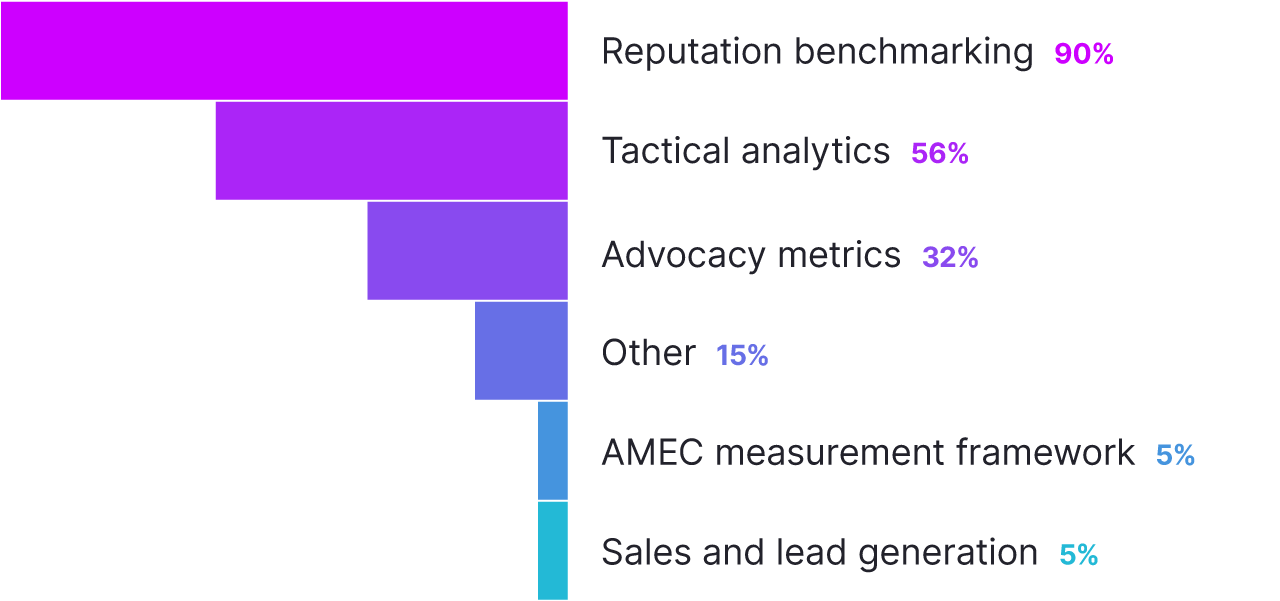
Reputation benchmarking is once again the metric most of our Influence 100 are measured against, with a full 90% saying their CEO evaluated their performance against this criteria. The figure last year was 84%, and in 2020, 89%. The number saying their CEO looked at sales and lead generation to evaluate the success of comms was just 5%, only one per cent higher than 2021.
This is the second year we’ve included advocacy metrics as an option, and this was chosen by 32%, up from 30% last year. We included the AMEC measurement framework as an option too, but just 5% said this was a key way their CEO evaluated PR and communications. Tactical analytics, such as impressions, media reach and social media engagement, were used by 56% of respondents, a marked jump from last year’s 44%.
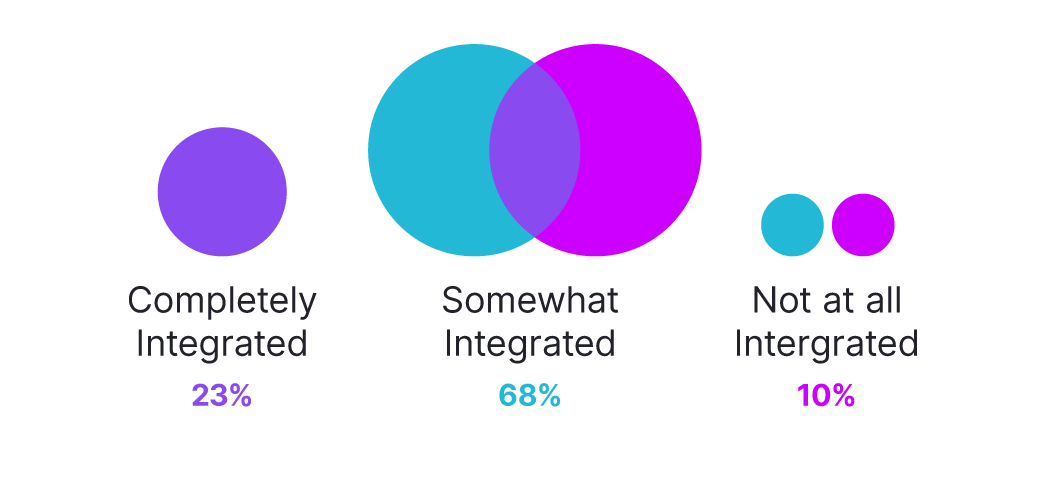
The overwhelming majority of respondents, 67.5%, said their comms function was somewhat integrated with the wider marketing team. This is an increase on last year’s 59%, but the proportion who said comms was completely integrated fell from 37% last year to 22.5% this year, and the number who said comms was a complete silo and not at all integrated increased, to 10% this year compared with 4% last year.
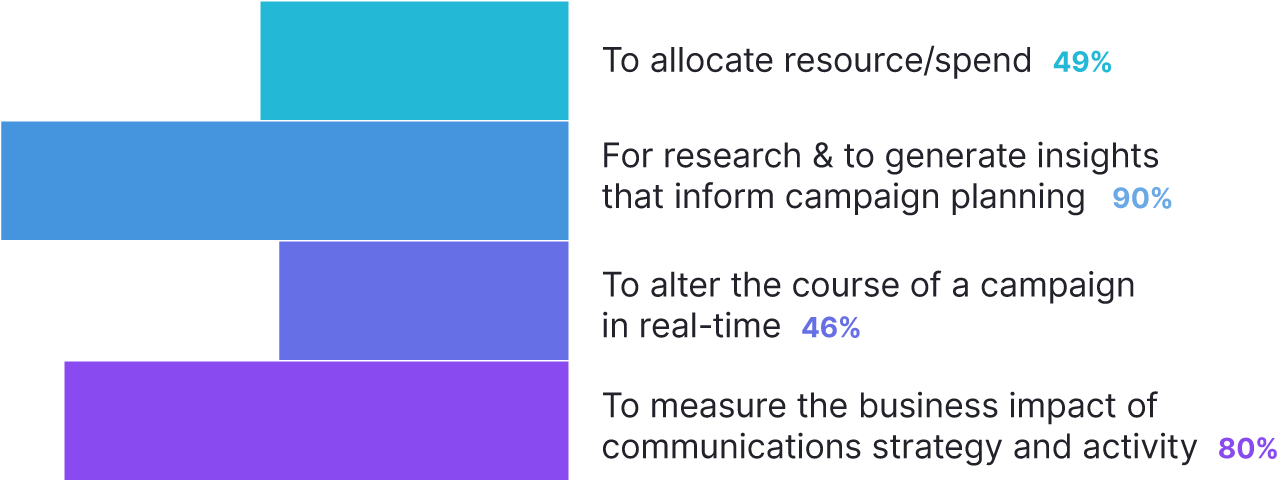
Once again the most popular reason for using data and analytics within marketing and communications was for research and to generate insights for campaign planning, with 90% choosing this option compared with 82% last year. A significant majority, 80%, use data and analytics to measure the business impact of comms strategy and activity, a figure consistent with last year’s responses. But the number using data and analytics to allocate resource and spend jumped from 37% last year to 49% this year, a fairly significant rise although still way behind 2019’s 65%. There was a slight increase in the number using data to tweak a campaign in real-time, up to 46% from 41% last year.
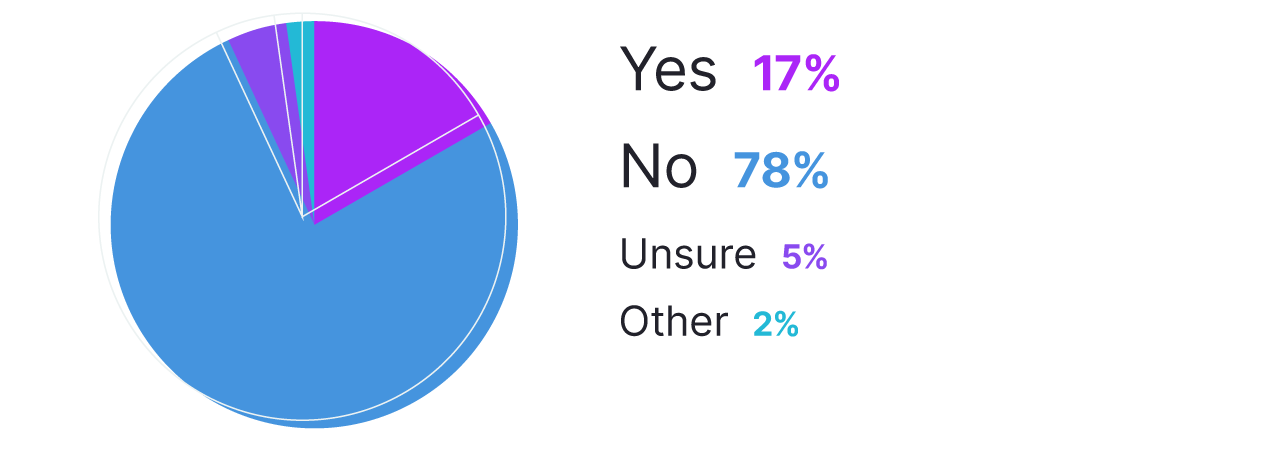 This question helps us establish if there’s a direct link made between comms and business results within brands. There has been a great deal of effort within the industry in recent years showing that PR can do just that, but the proportion who said PR was responsible for demand generation was still just 17%, only slightly higher than last year’s 12%. Interestingly there was also a slight rise in the number that said no, up from 76% last year to 78% this year, and five per cent said they weren’t sure. But the number giving other responses dropped from 14% in 2021 to just two per cent this year.
This question helps us establish if there’s a direct link made between comms and business results within brands. There has been a great deal of effort within the industry in recent years showing that PR can do just that, but the proportion who said PR was responsible for demand generation was still just 17%, only slightly higher than last year’s 12%. Interestingly there was also a slight rise in the number that said no, up from 76% last year to 78% this year, and five per cent said they weren’t sure. But the number giving other responses dropped from 14% in 2021 to just two per cent this year. 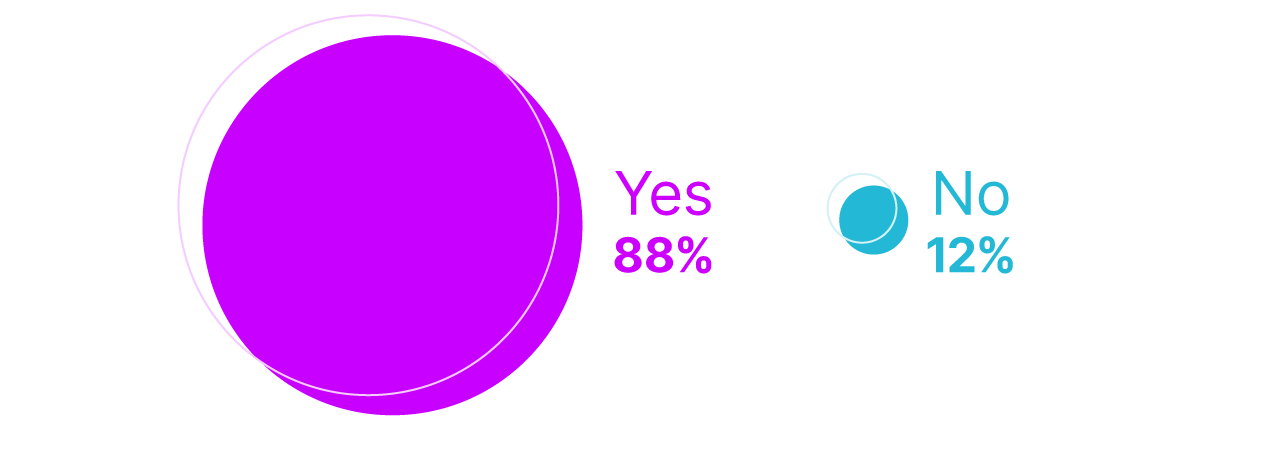 Employee engagement remains vital after the huge emphasis on communicating with internal teams during the first two years of the pandemic, with 88% saying it still formed a bigger part of the comms department’s role this year, compared with 90% last year.
Employee engagement remains vital after the huge emphasis on communicating with internal teams during the first two years of the pandemic, with 88% saying it still formed a bigger part of the comms department’s role this year, compared with 90% last year. 

Intelligence and insight from across the PR world.
About PRovoke Media Contact Us Privacy & Cookie PolicyWe feel that the views of the reader are as important as the views of the writer. Please contact us at [email protected]
Signup For Our Newsletter Media Kits/Editorial Calendar Jobs Postings A-Z News Sitemap© Holmes Report LLC 2024